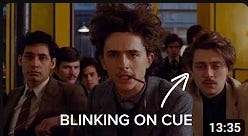How Singing in a Choir Inspired a New Way of Teaching Game Design: Lessons on Collaboration and Orchestration
Learn how adopting techniques from a music program, such as orchestration and guided instruction, can address cross-disciplinary challenges in game design and enhance student learning.
Using choir to inspire teaching game design
I’ve been a part of a choir this last school quarter, and its been a very fun and rewarding experience. The interesting thing that I’ve been thinking about is how different the choir setup is from my game design classes, yet they are actually remarkably similar in concept. Allow me to explain.
In game design a bunch of students are pulled together with different skillsets in different disciplines. The way our program works is that these groups self organize into self run teams that each leave and attempt to create a game. This is certainly a good way to go for allowing students the space to create and innovate. It is very inspired by the SCRUM work environment that is all the rage right now in the tech world. However this setup in our particular program does have some issues. Our classes are mostly game design majors. Which means we have a lot of programmers, and people who are interested in games. There always seems to be a shortage of people who can do art, and reaching out to find people from the school who make art and also want to help with games can be very hard. It is a cross-disciplinary task which means that you need a cross-disciplinary group of people. Just like in a choir.
In our choir everything is orchestrated by the instructor. Each student plays their part, and learns about how the process works by being given a chance to be a part of the experience lead by someone who knows what they are doing.
I’ve been thinking about this because I think that elements of my music program could be used and incorporated into my game design program for its benefit. The farthest end iteration of this for me is to have a teacher lead game creation where the students are doing all the low level tasks to help the professor create something. This gets all the students an experience similar to what it would be like in a AAA studio where the professor is orchestrating the higher level decisions and utilizes the skills of other students they pull in for specific tasks.
I can’t say for certain that a system like this would be better, but I found it interesting to think about. Personally I think some kind of mix of this would be really interesting. At the very least we could use some 3D artists right now.
YouTube Movie Analysis Appreciation
One of the most inspiring things for me is to see someone else’s breakdown of a piece of art. This is especially true for movies. Like with games, I don’t really care much for the standard stuff. I don’t just consume this kind of media because I’m bored. I like to see it molded, played with, tampered, and ruined. A constant influence for me are the videos by Thomas Flight about Wes Anderson’s style. They get me very excited to create, and play with my chosen mediums despite the fact that I have seen none of the movies that he talks about. Furthermore having someone explain to me what to look for while watching these movies often gives me a greater appreciation for the movie after I’ve watched it because I understand the context that the movie takes place in. This mimics the way that I feel about art now.
The family that I grew up in did not value art. Art was pointed at and laughed at. As a budding artist this was hard for me to wrap my head around and infinitely discouraging. A realization came to me when taking a class on the history of American art. The realization is that art does not stand on its own. You can’t just have a painting in a vacuum and expect it to do anything for you. Or at the very least those who do attempt to have art that works well with no context are left with very basic art. Art thrives when it stands on layers and layers of context, it adds depth, history, conflict, and drama that brings the piece to life as more than just colors on a surface. So I learned to appreciate the explanation of the art, art museums do a great job of writing the context behind the pieces, and what the artist was trying to accomplish. You can see the artist fighting the tropes and standards set before them with every stroke. Thinking back to my family, going through museums was a speedrun to see as much as fast as possible. The person who won was the person that could make fun of the most things during the excursion. This strategy, however, relied on remaining ignorant to the context of all the work that we raced by. If we had stopped to read the plaques, or even farther fetched, went on a guided tour we might have actually been able to appreciate the artists work and understand what the piece meant more than just “some colors and shapes.” Which is why I appreciate videos like this one so heavily, because for movies there is no meta-movie analysis option before you go to the theatre. As a general audience we may not be privy to the context and motivation behind why a movie was made which I feel is a huge loss.



